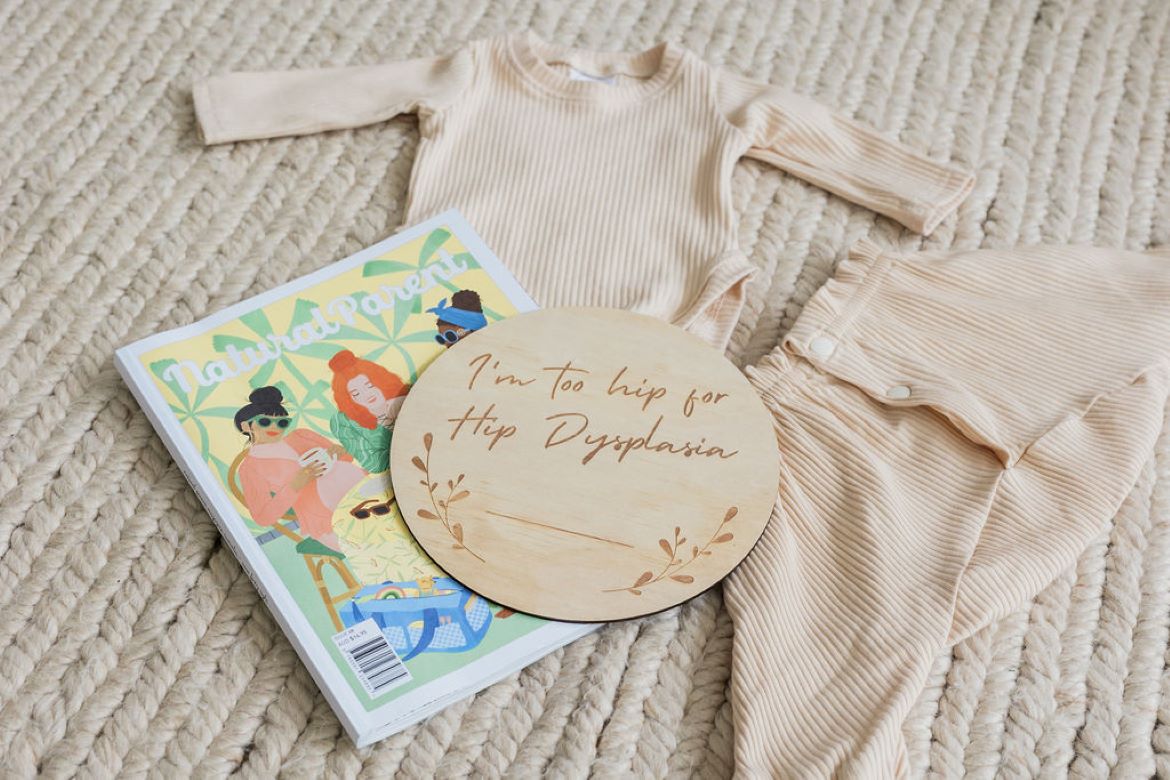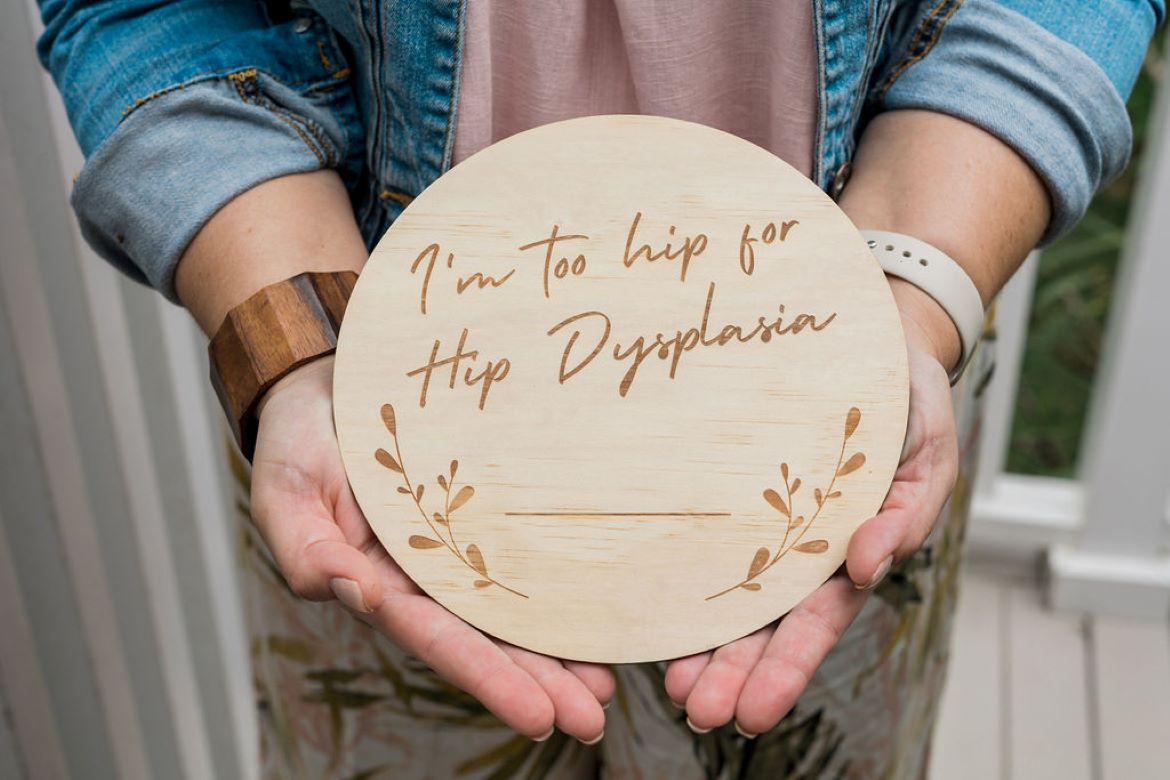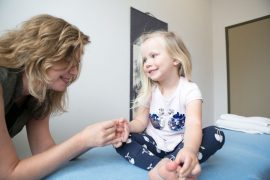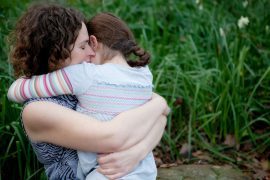Developmental dysplasia of the hip (DDH) is a condition where the bones of the hip joint are not aligned properly. It affects thousands of children and adults each year.
The shock of a DDH diagnosis at a time in parenting that is already stressful can leave you feeling washed out, anxious and lonely. You might be feeling unsure about what the future holds for your baby and their development, negotiating information overload and fearing the judgement from the world around you.
Early Detection is Key
Signs and symptoms to be aware of:
• Popping or clicking noise when moving the hips
• One leg appears to be shorter than the other
• Tightness in baby’s legs when trying to open them to change nappies
• Limping when they begin to walk
• Uneven thigh creases when on their belly

Your child’s health professional should be conducting routine hip checks at:
- Birth
- 1-4 weeks
- 6-8 weeks
- 6-9 months
- 12 months
- Routinely until 3.5 years
If you have any concerns, book an appointment with your GP or child family nurse. Symptoms of DDH are sometimes missed, but you know your child best.

Dealing with a Diagnosis
Many families have never heard of DDH until their child is diagnosed and gets a brace. The joy of preparing and welcoming for your new addition is overshadowed by medical appointments and the brace. Feeding, settling, clothing, nappy changes and sleep are all disrupted and have to be renegotiated. No longer is your squishy newborn or adventurous toddler able to move as freely and enjoy sweet soft cuddles so close. The brace is a barrier for many families: a barrier to enjoying your child’s babyhood and first few years.
At Hip Dysplasia Australia, we want you to know we are here to provide support and community: to acknowledge how hard this journey is and to provide a little love and light.











